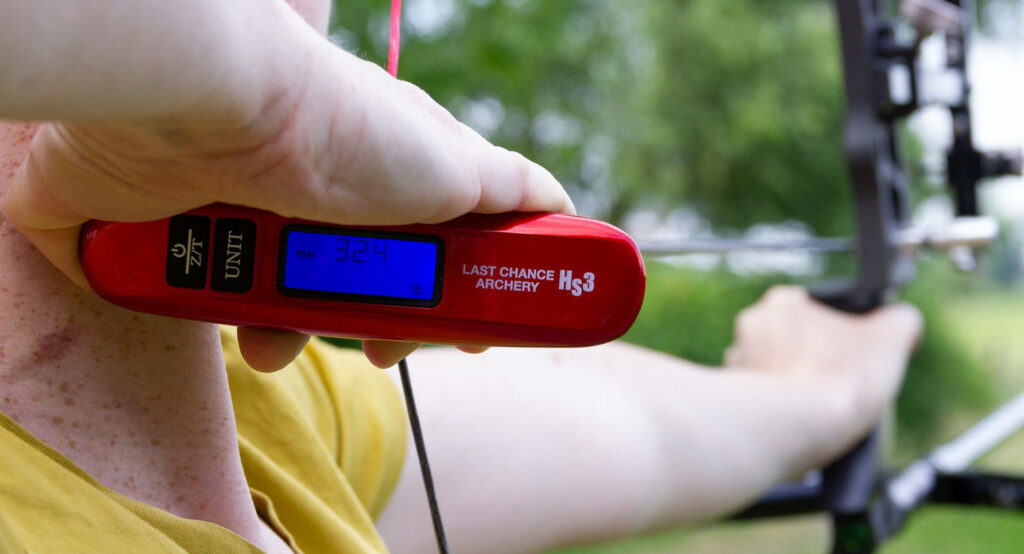When it’s time to choose the right arrow spine for your particular set-up, it can be confusing to know how to go about it because there is a difference between draw length and arrow length. Plus there is a difference between shooting compound and recurve as far as which arrow spines you need.
You’ll need two measurements to find the correctly spined arrow for your particular bow set-up. Your draw weight and your arrow length. Once you have those two measurements, you can then reference an arrow spine chart from the manufacturer of your arrows to find their recommended match.
Getting the right spine for your bow set-up is crucial to getting your arrows to fly straight and accurately. The process is fairly straightforward and doesn’t need to be over-complicated by adding too many variables.
How To Choose The Right Arrow Spine for Your Set Up
Choosing the right arrow spine for your set-up comes down to two crucial measurements. Draw weight, and arrow length. Without them both, choosing the correct arrows becomes nothing more than a guessing game.
Draw Weight
If you don’t know your exact draw weight already, you can use a set of bow scales, or an ordinary set of luggage scales.
One thing to note is that your draw weight will not be the same as what your limbs say. Limbs have been labelled as being a specific draw weight at a particular draw length.
If your draw weight doesn’t match what’s on the limbs, your draw length won’t be the same.
Let’s say you shoot with a 42lb draw weight. Depending on your limb bolt adjustment, your draw weight could range from 42 to 48 lbs. That’s a big difference.

Using a luggage or bow scale can give you a more precise full draw holding weight. This is more accurate than just referring to the limb label.
When measuring your draw weight on a recurve bow with a clicker, pull back to full draw using the scale. Stop when the clicker sounds.
If you’re shooting barebow, pull back the bow with an arrow to full draw. Have someone mark your arrow shaft.
Then, pull back to full draw again, this time with the scale. Note the weight when the mark on the shaft reaches the same point.
With this method, you’ll know your exact draw weight and be consistently reaching the same full draw every time.
Arrow Length
Arrow length will also determine how stiff or weak your arrow will be. Longer arrows will have a weaker spine, whereas shorter arrows will be a lot stiffer.
Arrow length is measured from the groove of the nock, where the string sits up against it, down to the end of the shaft, not to the end of the point.

The reason for this is that the point of the arrow does not flex. The amount of flex on the arrow has everything to do with how stiff an arrow you will need.
Shorter, lighter arrows will generally fly further and faster than longer, heavier arrows. The less the arrow flexes during flight, the better it is for speed and distance.
We mentioned earlier that your arrow length is different from your draw length, and that’s because your draw length is measured from the nock to the front of the riser plus an inch or two.
This, however, doesn’t mean that your arrows will always be that length. This is important to note if you’re a younger shooter or someone who is planning on using longer arrows with something like a clicker on the front of the sight bar.
Choosing Arrows Based on Draw Weight and Arrow Length
Once you have both measurements, the next step is to find the Arrow Spine Chart from the manufacturer who makes the brand of arrows you want to buy.
Most manufacturers have one on their websites. Below is a chart from Easton Archery. You can see the length of the arrow listed across the top, while the bow (draw weight) is listed down the right-hand side.
The manufacturer’s recommended arrows for draw weight are listed underneath each arrow length measurement.

One thing worth mentioning here is that you should only use a spine chart that has Recurve measurements listed.
If it only has Compound arrows listed, then find a different manufacturer. Compound arrows use a different spine rating than Recurve.
This is to do with the draw cycle and the exertion of how and when the energy is transferred through a Compound arrow which changes how the arrow flexes.
What is Arrow Spine?
Arrow spine refers to the arrow’s flexibility. It indicates how much an arrow bends when weight is applied.
Take an arrow marked 450 spine, for example. This arrow will deflect 450,000 of an inch when a 2lb weight is hung from its center. This is when the arrow is suspended between two points 28 inches apart.
A 300 arrow will deflect less, only by 300,000 of an inch. On the other hand, a 1000 spine arrow will bend by exactly 1 inch under the same 2lb force.
The higher numbers indicate a weaker spine, whereas the lower numbers indicate a stronger spine.
Stiffer arrows are required for higher draw weights, while weaker arrow spines are suited to lower draw weights.
I wrote an article going into more detail regarding arrow spine which you can read here.
Correctly spined arrows are essential for accuracy and consistency with your shots. Some common spine measurements include 150, 300, 450, 600, and 850. Manufacturers will label their arrows accordingly, but some numbers may differ according to different companies.
Conclusion
The process of spine selection can become confusing and overcomplicated. Many arrow manufacturers will provide as many different variables as possible which can completely overwhelm the novice archer.
So it’s good to remember that your draw weight and arrow length are really the only two measurements you need to successfully choose the right arrow spine for your bow set-up.

0 Comments